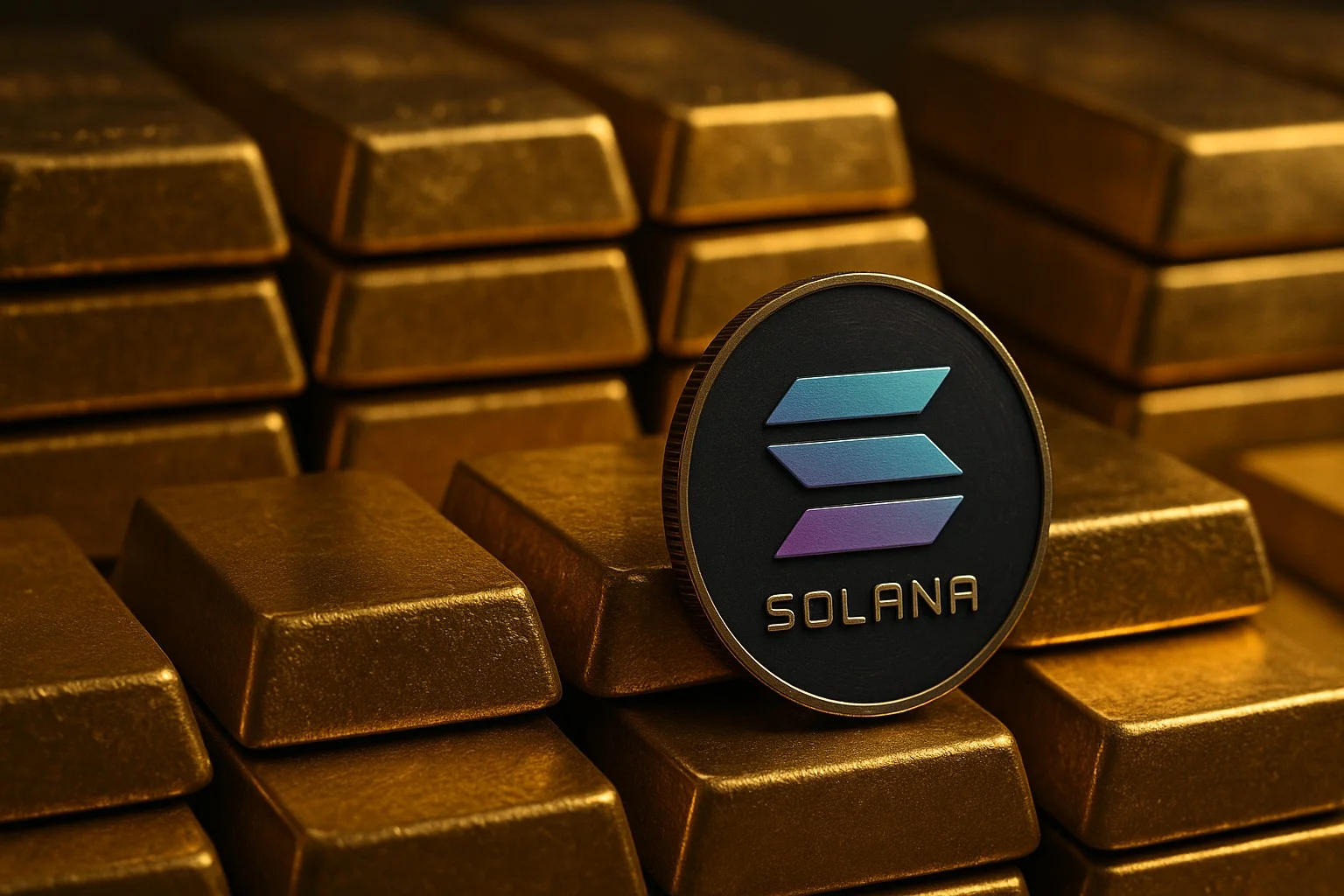News
Altcoin News
Altcoin News
Browse all Altcoin related articles and news. The latest news, analysis, and insights on Altcoin.
TON Comment and Price Analysis - 30 August 2025
TON Technical AnalysisAnalyzing TON chart on a daily time frame, we can see an ascending channel pattern. The price of the coin has tested both the lower and middle bands of this channel many times. TON is currently trading around $3.06, close to the middle border of the channel.The most important short-term support is the $3.10 – $3.00 zone. If this level breaks, the next support is at $2.76, which also matches the lower trendline of the rising channel. Keeping $2.76 is critical for the uptrend to continue. In a deeper pullback, $2.18 is the stronger bottom support.On the upside, the first resistance is at $3.31. Above that, $3.50 and $4.13 are the next resistance levels. If the price closes above $4.13, it could move towards the $4.87 – $5.16 range in the medium term.Overall, TON is still trading inside the ascending channel and currently testing the mid-band support. Holding above $3.00 keeps the bullish scenario valid. Closing above $3.50 may speed up the uptrend, while closing below $2.76 could weaken it. Rising Channel Structure SummaryTON is moving inside an ascending channel$3.00 – $3.10 is a key support, below it $2.76$3.31 and $3.50 are short-term resistancesAbove $4.13, price may target the $5 areaBelow $2.76, the bullish trend could breakThese analyses, not offering any kind of investment advice, focus on support and resistance levels considered to offer trading opportunities in the short and medium term according to the market conditions. However, the user is responsible for their own actions and risk management. Moreover, it is highly recommended to use stop loss (SL) during trades.
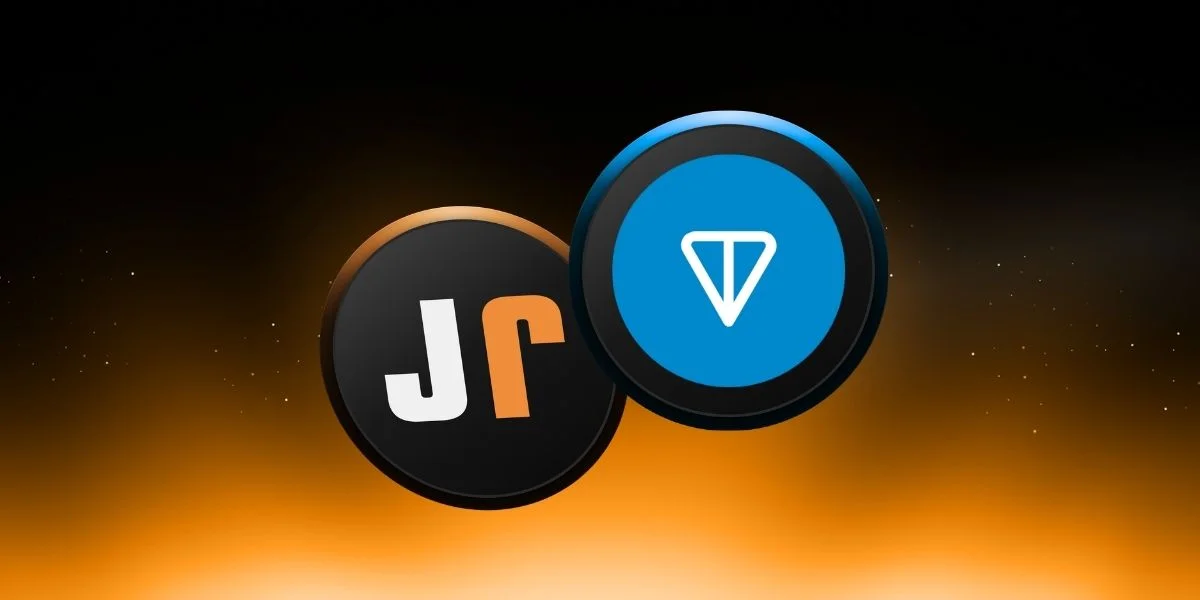
PYTH Comment and Price Analysis - August 29, 2025
PYTH Technical AnalysisThe U.S. Department of Commerce announced a strategic partnership with Pyth Network.Now, critical U.S. economic data will be published on-chain through Pyth.This is one of the first examples where a government-backed data source is integrated with decentralized oracle solutions. This news increased investor interest, and PYTH price entered an important technical breakout period.When we analyze the chart, we see that after the breakout, the price rose sharply to $0.1460, then $0.1680–$0.1765, and later reached $0.2060. This move reached a resistance area not seen for about 2.5 months.The zone $0.1680–$0.1765 has been tested before and is a strong supply area.After reaching it, daily candles show weakness and wicks. Some profit-taking from this zone is likely. If selling continues, the first support is $0.1680, and a strong support zone is $0.1270–$0.1208.This zone includes the broken triangle’s upper band and short-term demand.Even if the price drops here, the overall structure is expected to stay positive.For PYTH to continue rising, it needs to close above $0.1765.If it holds above this level, $0.2060 becomes the next strong resistance.Sustained trading above $0.2060 could signal a medium-term trend change.These analyses, not offering any kind of investment advice, focus on support and resistance levels considered to offer trading opportunities in the short and medium term according to the market conditions. However, the user is responsible for their own actions and risk management. Moreover, it is highly recommended to use stop loss (SL) during trades.

Ethereum ETFs Shine in August: Bitcoin ETFs Reverse
Spot Ethereum ETFs in the US are poised to close August with net inflows exceeding $4 billion. Meanwhile, Bitcoin ETFs are on track to close the month with net outflows this time, following their strong performance in previous months.Ethereum's RiseAccording to market data, spot Ethereum ETFs recorded net inflows of approximately $4 billion in August. This figure was the second-highest monthly performance for Ethereum funds, following the $5.4 billion record set by Ethereum funds in July. This trend, which accelerated since July 17th, paralleled the sharp rise in the price of Ethereum. While ETH had been in a year-to-date loss against BTC until mid-July, it quickly gained a 13.8% return advantage. The chart over the last six weeks is particularly striking: Bitcoin ETFs outperformed Ethereum ETFs for only seven days during this period. In terms of net inflows, Bitcoin funds recorded $505 million in inflows during the same period, while a total of $7.1 billion flowed into Ethereum funds. Headwinds for BitcoinBitcoin ETFs maintained their lead in July with $6 billion inflows. However, things reversed in August. According to current data, $622.5 million in outflows from Bitcoin funds occurred during the month. This marks Ethereum products' largest monthly lead since they began trading in July 2024.A look at the cumulative figures for the last two months reveals that Ethereum ETFs led with $9.5 billion in net inflows. Bitcoin funds recorded $5.4 billion in inflows during the same period. However, from a long-term perspective, it's worth noting that Bitcoin products still hold a clear lead: BTC ETFs topped the list in cumulative inflows at $54.6 billion, while Ethereum products remained at $13.7 billion. This is largely due to the fact that Bitcoin funds launched earlier, with a six-month advantage.The seven-day daily inflow lead for Ethereum ETFs ended on August 28. That day, $178.9 million inflows into Bitcoin ETFs, while $39.1 million inflows into Ethereum funds were particularly notable. Ark Invest's ARKB fund attracted $79.8 million in inflows. BlackRock's IBIT fund received $63.7 million in inflows. On the Ethereum front, BlackRock's ETHA product led the way with $67.6 million.Bitcoin ETFs still lead in trading volume. However, daily volumes for Ethereum funds are gradually approaching. On August 28, ETH ETFs generated $2 billion in volume, while BTC funds reached $2.5 billion.Timothy Misir of BRN Research notes that ETF demand continues to absorb more than twice Bitcoin's daily supply. However, he states that BTC remains stuck around $111,000, suggesting a neutral outlook for the market. On the Ethereum side, a drop below the $4,500 support is considered a sign of short-term weakness.
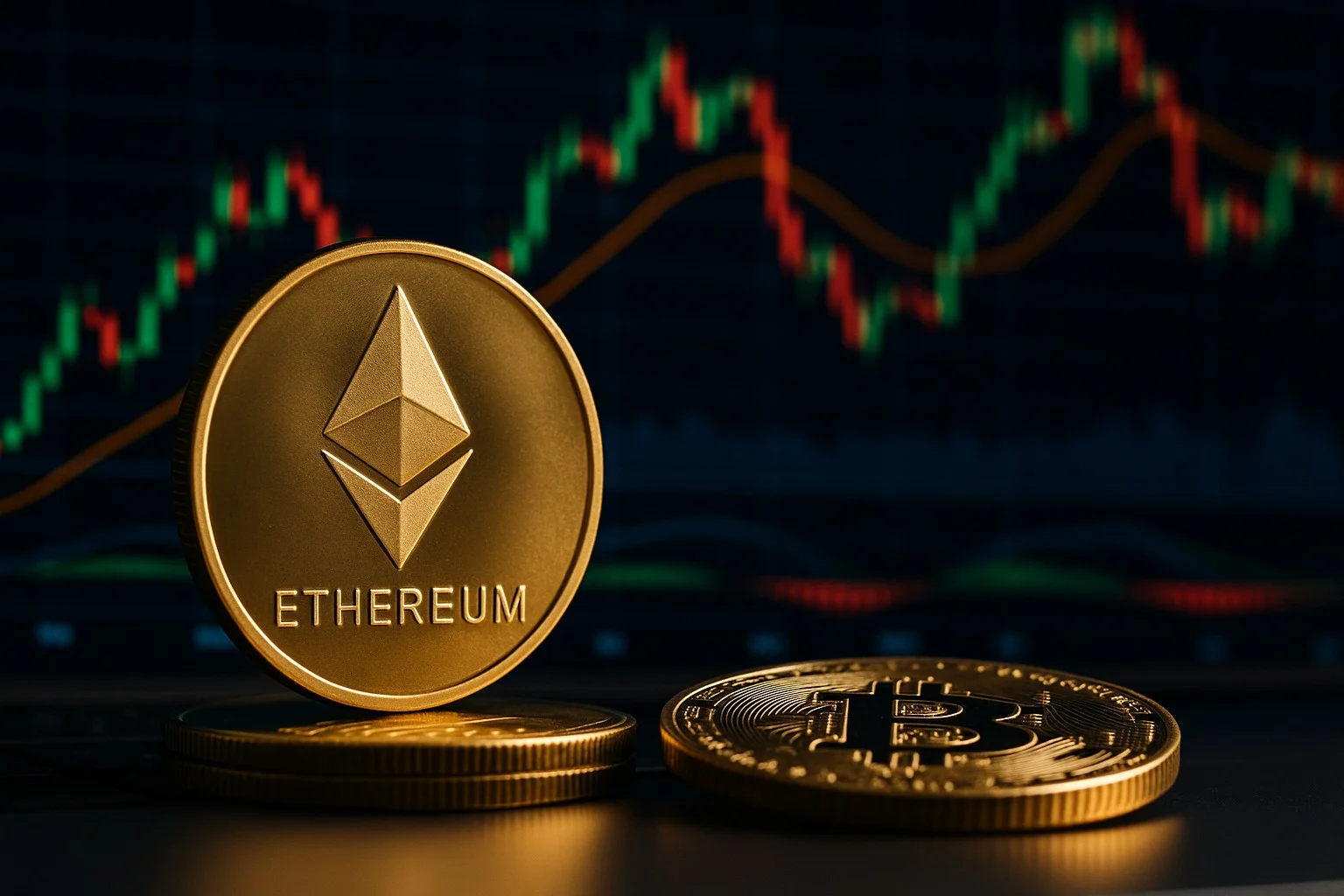
Crucial Friday for Bitcoin and Ethereum: $14 Billion in Options Expires
Crypto markets are preparing for sharp volatility today. A total of $14.6 billion in Bitcoin and Ethereum options contracts for August are expiring at the end of the day. Because it's the end of the month, today's expiration is significantly higher than in previous weeks.$11.47 Billion in Options on BitcoinAccording to Deribit data, $11.47 billion in options contracts are expiring for Bitcoin alone. There are a total of 102,598 options contracts, and the Put/Call ratio, which reflects the balance between puts and calls, is 0.78. This ratio signals a cautious but generally optimistic outlook in the market. The "maximum pain" level for Bitcoin options today is set at $115,000. This means that most investors will experience the greatest losses when the price approaches this level. Therefore, the expiration of options could push prices towards this critical point. $3.1 billion in Ethereum options contracts are expiring.On the Ethereum side, $3.137 billion in options contracts are expiring. The total number of open interest is 697,419, and call options clearly dominate. The put/call ratio is at 0.77, indicating that investors are more bullish on ETH.The "maximum pain" level for Ethereum is $3,800. This price range could put pressure on ETH upon expiration. Analysts note that Ethereum options offer a weaker outlook compared to Bitcoin, and that upside expectations are limited.Nvidia Effect: Could Markets Experience Extra Volatility?As the option expiration approaches, the main debate in the market is how Nvidia's strong earnings results, announced on Wednesday, will impact cryptocurrencies. According to analysts, the company's massive earnings have triggered volatility in traditional markets, and this impact is likely to spill over into Bitcoin and Ethereum. According to markets data, Nvidia's implied volatility (IV) is at 100%, with a 7% price movement expected. The main question on crypto investors' minds is: "Will Bitcoin move in line with traditional markets due to Nvidia's influence, or is it now sufficiently independent?"Expected Market ScenarioAs of today, Bitcoin is trading at $109,561, while Ethereum is at $4,4300. Consequently, crypto markets are poised for a volatile time today due to both the high volume of options expiration and the Nvidia influence. Investors will be watching closely to see whether Bitcoin will approach $115,000 or enter a stronger uptrend despite the options pressure.

ARKM Comment and Price Analysis - August 28, 2025
ARKM Technical AnalysisArkham Intelligence, which is an AI company supported by OpenAI, announced a new partnership this week in blockchain security. Arkham integrated its on-chain data with the crypto insurance platform InsurAce. This integration could help detect anomalies early and reduce insurance risks. On the chart, ARKM is moving toward the end of a symmetrical triangle pattern. Symmetrical Triangle Structure When we analyze ARKM on a daily time frame, we see that the recent price action between $0.5544 – $0.5023 shows that the triangle is almost complete. The apex of the triangle matches the first days of September, meaning the next few daily candles will be very important.If the price makes a clear breakout above $0.5544, buyers will take control. But if $0.4850 breaks down, we may see a sharp move to the downside.ARKM is currently trading around $0.5140, sitting in the middle of the triangle. The zone $0.5023 – $0.4850 acts as both horizontal support and the lower border of the triangle.On the upside, the levels $0.5544 – $0.570 are both the triangle’s upper border and a strong resistance area from the past. If the price moves above this zone, the next targets are $0.6119 and $0.6337. However, until the triangle breaks upward, these targets are still early to expect.These analyses, not offering any kind of investment advice, focus on support and resistance levels considered to offer trading opportunities in the short and medium term according to the market conditions. However, the user is responsible for their own actions and risk management. Moreover, it is highly recommended to use stop loss (SL) during trades.

AVAX Comment and Price Analysis - August 28, 2025
AVAX Technical OutlookAVAX has been moving within a broad descending channel for an extended period, with the lower, middle, and upper bands of the channel still maintaining their technical validity.Currently, the price is trading just above the horizontal resistance at $23.80. The $22.40 - $23.80 range is a critical zone, acting both as a horizontal support-resistance flip area and a key region based on previous swing highs and lows. Sustained price action above this zone would keep the upside potential intact, increasing the likelihood of a move toward the upper band of the channel.The upper band of the channel overlaps with the $30.20 – $32.91 resistance zone. This zone will serve as a strong barrier in any potential upward wave. A decisive breakout of this level, supported by strong volume, would also mark an upward break of the descending channel structure, opening the door for a medium-term bullish trend.On the downside, a drop below $22.40 would bring the $20.00 level into focus as the first support. Below that, $18.74 should be monitored as a critical defense line. Closing below these levels could increase the risk of a deeper pullback toward the channel’s lower band. Falling Channel View Summary:Price: $24.18, trading near the middle-upper band of the descending channelSupport zone: $22.40 – $23.80 (holding above is bullish)Resistance: $30.20 – $32.91 (overlaps with the channel’s upper band)Lower supports: $20.00 → $18.74Overall structure: Still within the descending channel but approaching a key resistance area. Sustaining above $23.80 strengthens the bullish case, while a break above $30 could signal a trend reversal.This analysis does not constitute investment advice. It focuses on support and resistance levels that may offer potential short- and medium-term trading opportunities depending on market conditions. Trade execution and risk management remain entirely the responsibility of the user, and the use of stop-loss orders is strongly recommended.

Groundbreaking Move from the US: Chainlink and 9 Altcoins on the Agenda for Economic Data
The US government has decided to stream its macroeconomic data directly to the blockchain for the first time. According to the US Department of Commerce's announcement, critical data such as Gross Domestic Product (GDP), Personal Consumption Expenditures (PCE) Index, and US domestic demand strength have been made accessible on-chain thanks to Chainlink's oracle infrastructure. This development is considered a historic milestone in the distribution of public data on the blockchain.Data to be Published on 10 Different NetworksAccording to the Ministry's statement, economic indicators will initially be published on 10 different blockchain networks: Arbitrum, Avalanche, Base, Botanix, Ethereum, Linea, Mantle, Optimism, Sonic, and ZKsync. This data, securely transmitted via Chainlink Data Feeds, will be updated monthly or quarterly. This will allow markets to track macroeconomic indicators in a transparent and immutable format on-chain. Meanwhile, the US government recently shared GDP data on Bitcoin, Ethereum, Solana, TRON, Stellar, Avalanche, Arbitrum, and Polygon. This approach demonstrates the government's growing interest in blockchain technology.Chainlink's rise and market impactLINK, Chainlink's (LINK) native token, gained over 5 percent in value following the announcement of this partnership. In the eyes of investors, this integration with the US government enhances Chainlink's credibility and proves that oracle solutions can also play a role in state-sponsored applications.Chainlink has previously collaborated with major institutions such as BNP Paribas and SWIFT, playing a key role in cross-chain asset transfer tests. Chainlink's Cross-Chain Interoperability Protocol (CCIP) infrastructure was used in the trials conducted with SWIFT, and this was highlighted as a critical step in the tokenization process. Paving the way for next-generation applicationsAccording to experts, the US's move to on-chain data could create new opportunities for decentralized finance (DeFi) applications. For example, lending protocols could adjust interest rates based on GDP data, or inflation expectations could be reflected more transparently through PCE index-based prediction markets. Furthermore, automated trading strategies and new asset types based on tokenization could be among the infrastructures that will feed into this data.Chainlink has recently attracted attention not only for its technical collaborations but also for its policy engagements. The company announced that it is negotiating with the US Securities and Exchange Commission (SEC) on broker-dealer and transfer agent regulations and is also contributing to legislative initiatives such as the GENIUS Act.The US Department of Commerce released a statement regarding PYTHThe US Department of Commerce's statement emphasized that the Pyth Network will play a key role in the secure and transparent distribution of economic data on-chain. Following extensive collaboration with Secretary Howard Lutnick, Pyth's official participation in this initiative is considered a significant step in the public sector's adoption of decentralized infrastructure. The company stated that this development strengthens Pyth's position as a trusted data provider and has achieved nationwide approval.

Tether Brings USDT to Bitcoin Network
Tether, the world's largest stablecoin issuer, announced on August 28th that it will launch its USD₮ (USDT) stablecoin directly on the Bitcoin network. This move makes USDT the first major stablecoin to exist natively on Bitcoin. First Native Stablecoin on BitcoinTether's chosen technology for integration is the RGB protocol, which launched on the mainnet this month with version 0.11.1. RGB is built on Bitcoin's Taproot framework and enables the private, scalable, and user-controlled issuance of digital assets. This will enable USDT transactions to be processed more lightweight, faster, and with greater privacy on the Bitcoin network.The company's CEO, Paolo Ardoino, stated, "Bitcoin deserves a lightweight, private, and scalable stablecoin that feels truly native." According to Ardoino, this integration will both strengthen Bitcoin's use as a payment network and expand USDT's reach. Both Bitcoin and USDT in the Same WalletThanks to RGB integration, users will be able to store and transfer Bitcoin and USDT in the same wallet. This will make stablecoin transactions more convenient and help Bitcoin transcend its role as a mere "store of value." Furthermore, the offline transactions supported by the protocol will provide flexibility and resilience across different payment environments.This development could pave the way for Bitcoin to be used more effectively not only for investment purposes but also as a means of daily payment.USDT's Huge Market ShareTether is currently the market's most dominant stablecoin, with a USDT supply of over $167 billion and a daily trading volume of approximately $118 billion. Used across a wide range of platforms, from centralized exchanges and DeFi platforms to cross-border payment systems and OTC desks, USDT stands out as the crypto market's primary liquidity tool.The migration of USDT to the Bitcoin network is quite exciting, as it represents the convergence of the market's most secure and decentralized blockchain with the most liquid stablecoin. This alliance could create new opportunities, particularly for institutional investors, payment providers and global financial actors.

Solana Launches the Millisecond Era: Voting Opens
The Solana ecosystem is taking a critical step toward high speed and scalability. Alpenglow, announced as the network's new consensus update, has been opened to community voting and has generated significant buzz in the crypto market. This proposal aims to surpass Solana's existing Proof-of-History (PoH) and TowerBFT mechanisms, offering a much faster, more secure, and more efficient platform. Votor: From 12.8 seconds to 150 millisecondsAt the heart of the proposal are two new components: Votor and Rotor. Votor reduces block completion time from 12.8 seconds to just 150 milliseconds. This means users can receive near-instant transaction confirmations. This development is expected to be particularly revolutionary in speed-critical areas such as DeFi protocols, high-frequency trading, and blockchain-based games.Rotor, on the other hand, optimizes data transfer on the network, reducing the number of "network hops" in communication between validators. This allows for more efficient bandwidth usage, significantly improving network performance. Rotor's full integration will occur at a later stage."20+20 Model" for Security and ResiliencyAlpenglow isn't just focused on speed; it also focuses on security and network resiliency. The "20+20 resiliency model," highlighted in the proposal, ensures the system will continue to operate even if 20% of the network consists of malicious validators and an additional 20% consists of offline or unresponsive validators. This approach provides significant assurance for decentralization and fair verification processes.The proposal text states: "Alpenglow reduces consensus latency to a level comparable to Web2 applications, while simultaneously strengthening security, scalability, and economic fairness."Community Voting and Market ImpactThe Alpenglow update, codenamed SIMD 0326, requires two-thirds of the validators' approval to be accepted. According to official data, approximately 10% of validators have voted positively and 9.9% negatively. For Quorum to be established, the participation rate needs to exceed 33%.This development has already resonated with the market. Solana's native token, SOL, gained 3% following the proposal, reaching $211. Trading volumes increased by 43%, and investor sentiment reached an 11-week high. Open interest in derivatives markets also increased, demonstrating growing interest from institutional and individual investors.If the proposal is accepted, Solana will be one of the first major blockchain networks to offer block finality in milliseconds rather than seconds. This could create an infrastructure that rivals transaction-intensive Web2 applications like traditional finance and social media platforms.However, some concerns have also been raised within the community. The reliability of Alpenglow in practice remains a matter of debate, especially given past network outages. Still, most analysts believe this move will make Solana more attractive for institutional adoption.
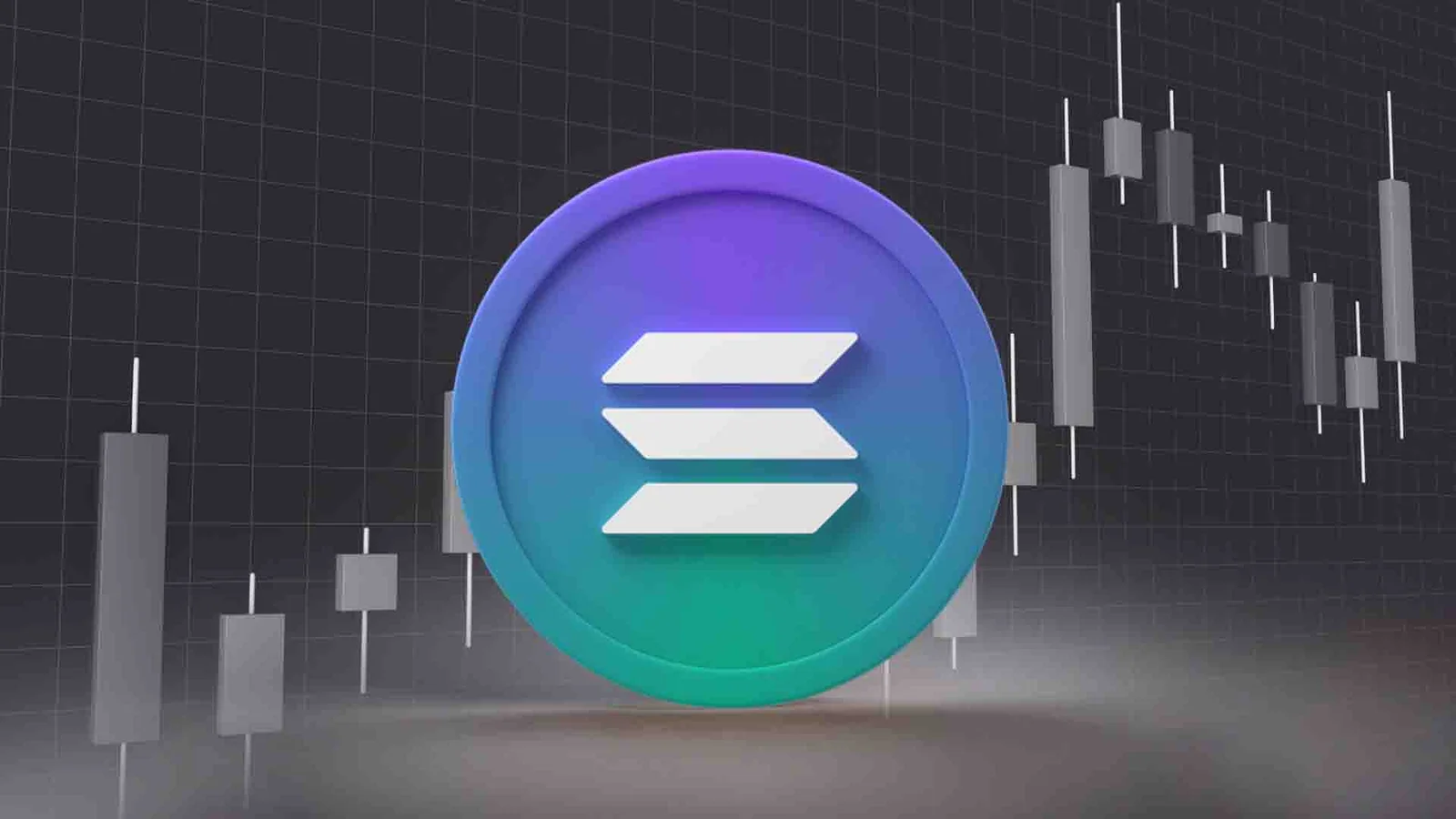
What is Sonic (S)?
The cryptocurrency market is constantly striving for better speed and efficiency. Bitcoin stands out for its security but is slow, while Ethereum is strong for its flexibility but often suffers from transaction fees. This is where new-generation projects are emerging, striving to meet users' expectations of a network that is both fast, inexpensive, and easy to develop. Sonic, a high-speed Ethereum-compatible Layer-1 blockchain platform, is one such project that addresses this need. Developed with years of experience from the Fantom team, this network emphasizes speed, scalability, and low-cost transactions within the blockchain ecosystem. The platform's native token, known as S (Sonic), is used to run the network, pay transaction fees, and ensure security through staking. Sonic, a prominent Web3 infrastructure project, stands out with its goal of processing over 10,000 transactions per second (TPS). In short, when asked, "What is Sonic coin?" the simplest answer is to see Sonic as a blockchain network that offers fast, inexpensive, and scalable solutions. In this guide, we'll explore Sonic's definition, history, founding team, price history, and importance within the Web3 ecosystem step by step. Read on.Sonic's Definition and OriginsSonic is an EVM-compatible layer-1 blockchain network developed by the experienced team at the Fantom Foundation. It aims to establish a high-performance infrastructure and is attracting attention in the blockchain world in this regard. If you ask, "What is Sonic coin?", it's safe to think of it as a successor to Fantom, capable of processing tens of thousands of transactions per second. Sonic's native token, S (Sonic token), is created on the Ethereum network using the ERC-20 standard. This token is used to pay transaction fees, ensure security through staking, and vote in governance processes. So, the clearest answer to the question, "What is the Sonic token used for?" can be summarized as its use as a transaction fee on the network and giving its holders a say in governance.Sonic's roots are actually rooted in Fantom. The Fantom platform was first announced in 2018 and quickly attracted attention with its fast transaction capacity. By 2023, the project had evolved and taken on the name "Sonic." The development team included Michael Kong (CEO of Sonic Labs), who launched the Fantom Opera blockchain, and Andre Cronje (CTO), a renowned figure in the DeFi world. In 2024, this team took another significant step, initiating a rebranding process and establishing two new entities: the Sonic Foundation and Sonic Labs. That same year, Sonic raised $10 million in an investment round led by Hashed, significantly accelerating its development efforts.Sonic's launch goal is straightforward: to make blockchain transactions faster, cheaper, and more scalable. The target capacity is tens of thousands of transactions per second, enabling DeFi, NFT, or Web3 applications to run seamlessly. A number of attractive tools have also been developed for developers. For example, SonicVM provides an EVM-compatible environment, allowing smart contracts written in Solidity to be ported to Sonic with virtually no modifications. In addition, there's the Fee Monetization (FeeM) model, which motivates developers. Thanks to this model, app developers can earn up to 90% of the transaction fees generated by their apps. In other words, Sonic takes an approach that focuses not only on users but also on developers.Sonic's position within the Web3 and DeFi ecosystems is quite interesting. The project stands out with both its speed advantage and its incentive mechanisms. Thanks to the Sonic Gateway, an Ethereum bridge, users can securely transfer their Ethereum assets to the Sonic network and vice versa. This provides Sonic with a significant liquidity flow. Furthermore, the community is constantly growing through activities like airdrops, incentive programs, and hackathons.Sonic's History: Key MilestonesThe most important element that shapes the identity of any project is its journey and the milestones it has left behind. The situation is no different in the blockchain world; to understand the reliability of a network, its vision, and its future position, one must first examine its history. Sonic's story actually begins with Fantom and has evolved over time through investments, technical developments, and rebranding. This journey, spanning from 2018 to the present day, also demonstrates the transformation of the overall crypto ecosystem. Therefore, examining Sonic's history offers much more than simply answering the question "Sonic coin history." Now, let's take a closer look at Sonic's key milestones, from its birth to its mainnet launch, from its investment rounds to its price peak.Sonic's story actually begins in 2018. The project's origins lie in the Fantom network. The Fantom platform was announced in June 2018 as an independent layer-1 blockchain aimed at enabling high-speed, low-fee transactions, and quickly began to make a name for itself.By 2021, the Fantom network achieved a significant technical achievement. The network reached a capacity of 2,000 transactions per second, a remarkable level for the time.2023 marked a turning point for Fantom. At that time, the project was rebranded as "Sonic." The target transaction capacity was also significantly increased, with plans to reach 10,000 transactions per second. During this period, the Fantom Opera infrastructure was developed and improved, and the design of a new virtual machine, SonicVM, began.In May 2024, a significant financial step was taken for the Sonic team. The Fantom Foundation successfully completed a $10 million investment round for Sonic's development. During this period, two new organizations, the Sonic Foundation and Sonic Labs, were established. The investment focused on developing new infrastructure to support the ecosystem.In June 2024, the Sonic Foundation announced a significant program called the "Innovator Fund." This fund, valued at 200 million S tokens, was designed to accelerate the launch of the new network. The fund was launched to encourage the migration of existing applications within the Opera ecosystem to the Sonic network, and during this period, it established connections with key projects such as Curve, Aave, Compound, and Frax.The Sonic network entered testing in August 2024. Throughout the summer, trials were conducted on the testnet, and community-driven incentive programs were implemented. During this period, the Ethereum bridge, called the Sonic Gateway, was also tested and its functionality was verified.December 18, 2024, marked the official launch of Sonic. The Sonic mainnet was launched on this date. At launch, it was announced that the network had reached a capacity of 10,000 transactions per second, with transactions confirmed in sub-seconds and a secure connection to the Ethereum network. Fantom holders were also granted the right to convert their FTM tokens to S tokens at a 1:1 ratio.Sonic's native asset, the S token, was officially launched in January 2025. During this period, the transition from FTM to S token continued. Immediately following the launch, the S token price rose rapidly, reaching $1.02 on January 4, 2025, marking the token's all-time high. After 2025, the Sonic team continued its efforts to grow the ecosystem. Hackathons, airdrop campaigns, and funding programs were organized regularly. Furthermore, key protocols like the Aave community began discussing the addition of stablecoins like frxUSD to the Sonic network.Why is Sonic Important?One of the best ways to understand the future adoption of a blockchain project is to look at its advantages. It must combine the speed, low cost, security, and developer-friendly solutions that users truly need. This is precisely why Sonic stands out. With its high transaction capacity, near-instant confirmation times, very low costs, and wide-ranging use cases, Sonic has become a resounding project in the Web3 ecosystem. Furthermore, it stands out with its infrastructure that encourages not only users but also developers. Now, let's take a closer look at these features that make Sonic so important.High Transaction SpeedSonic's most talked-about feature is speed. The network is designed to handle over 10,000 transactions per second, a figure that distinguishes it from many layer-1 blockchain projects. According to data shared by SonicLabs, the theoretical capacity can reach up to 400,000 TPS. While not yet used in practice, this demonstrates Sonic's robust infrastructure. Transaction confirmation in sub-seconds eliminates user waiting times. This speed provides a critical advantage, especially for liquidity transactions in DeFi applications or for recording instantaneous transactions on the GameFi side.Developer-Friendly InfrastructureIt's clear that Sonic cares not only about users but also about developers. Because the network is fully EVM-compatible, smart contracts written in Solidity can easily be run on Sonic. Furthermore, specialized infrastructures like SonicVM and SonicDB reduce storage requirements during the transaction process and minimize the risk of errors. This allows developers to implement their applications in a more efficient and secure environment. Furthermore, thanks to the Fee Monetization model, developers can receive up to 90% of the transaction fees generated by their applications. This means that a team developing a successful application on Sonic has the opportunity to generate revenue not only from project success but also directly from transaction fees. Low Transaction FeesPerhaps one of Sonic's most appealing features, besides its speed, is its transaction costs. The average transaction cost is only $0.001. This low fee makes the network extremely convenient for small transfers and micropayments. For example, when a user wants to send a small amount of tokens to a friend, they don't have to pay high gas fees like on Ethereum. The same applies to NFT trading or in-game transactions. Therefore, Sonic offers an affordable option for both large investors and everyday users.Wide Range of UsesSonic's high speed and low fee advantages aren't limited to one area. It can be used in a wide range of applications, including DeFi protocols, decentralized exchanges, NFT platforms, GameFi applications, and even payment solutions. Sub-second confirmation times are crucial, especially for gaming and metaverse projects; Sonic can meet this need. Furthermore, thanks to the Sonic Gateway, an Ethereum bridge, assets on Ethereum can easily be moved to the Sonic network. This makes Sonic a part of the Ethereum ecosystem, rather than an isolated blockchain. In other words, users can benefit from both Ethereum's liquidity and Sonic's speed and low cost advantages. Schematic of the Sonic Gateway. Source: Pavel Paramonov Sonic's Developers and CommunitySonic is actually backed by a team well-known in the crypto world. Michael Kong, CEO of the Fantom Foundation, is leading the project. On the technical side, Andre Cronje, a prominent figure in the DeFi ecosystem, is on the team. Cronje's presence on the Sonic team adds further value to the project. Cronje, particularly with his development of Yearn Finance (YFI) in the early years of DeFi, has generated significant buzz and is considered a pioneer of decentralized finance. YFI's community-focused governance model and rapid success have made him one of the "architects of DeFi" in the crypto world. Therefore, Cronje's role as Sonic's technical leader sends a strong message about the project's credibility and vision. This team, having gained trust through the experience they gained during the Fantom era, now aims to take Sonic to the next level.Not only the team but also the support of prominent investors makes Sonic stand out. Major names such as Hashed, UOB Ventures, the Aave Foundation, and Signum Capital are providing financial support to the project. In addition, it has established close partnerships with leaders in DeFi protocols such as Curve, Aave, and Compound. The Aave community has even discussed adding FRAX stablecoins to the Sonic network. Such steps suggest that the Sonic ecosystem could expand significantly in the future.On the community side, Sonic is quite active. Major airdrops and incentive programs have been prepared for users and developers. With an airdrop of approximately 190.5 million S tokens, users can earn Sonic Points and acquire S tokens. Developers are rewarded with Sonic Gems, which can distribute S tokens to both themselves and their app users. The Gem score is calculated as follows: Furthermore, initiatives like the Innovator Fund and organized hackathons provide funding and guidance for new projects. This keeps the community vibrant and encourages the continued addition of new projects.Another key aspect of Sonic is its open-source nature. The network is developed transparently, and updates and roadmaps are shared with the community. The Sonic Foundation is responsible for the network's governance and treasury management, while Sonic Labs focuses primarily on projects that will accelerate growth. This structure ensures a voice for participants and helps build the project's future together with the community.Frequently Asked Questions (FAQ)Below, you can find some frequently asked questions and answers about Sonic:What is Sonic, and when was it released?: Sonic (S) is a high-speed blockchain network developed by the Fantom team. The mainnet went live on December 18, 2024, and the S token was launched in January 2025. In short, Sonic is an upgraded version of Fantom, aiming to offer faster and lower-cost transactions.Who developed the Sonic coin?: Sonic was created by the same team that previously developed Fantom. The project is led by Michael Kong, CEO of the Fantom Foundation, and Andre Cronje, a well-known name in DeFi, is on the technical side. In other words, Sonic is backed by renowned developers who share Fantom's experience. How fast is the Sonic network?: Sonic's design is designed for a capacity of 10,000 transactions per second. According to SonicLabs, it can theoretically reach 400,000 TPS. This means transactions are typically confirmed in less than a second.Is Sonic coin suitable for investment?: Sonic stands out with its experienced team and high speed target. Its post-launch listing on reliable exchanges like Crypto.com has added credibility to the project. However, like every crypto asset, the S token is susceptible to price fluctuations, so it's important to consider the risks when investing.What are the uses of Sonic?: Sonic's fast and affordable infrastructure makes it attractive for DeFi protocols, NFT marketplaces, and GameFi projects. Real-time finance applications and games can also benefit greatly from this speed. Furthermore, thanks to the Sonic Gateway, Ethereum assets can be easily migrated to the network.What network does Sonic run on?: Sonic operates as an independent layer-1 network and, thanks to its EVM compatibility, provides full integration with Ethereum smart contracts. Transactions are conducted on its own network using the S token. Furthermore, Sonic Gateway seamlessly connects to Ethereum, bringing together the advantages of both ecosystems.Follow the JR Kripto Guide series for the latest content on the Sonic network and next-generation solutions in the blockchain world.

What is Four (FORM)?
We frequently witness projects undergoing transformation in the cryptocurrency world. Today, we take a closer look at one of these transformational stories: the rebirth of BinaryX as Four (FORM). Aiming to bring together diverse areas of Web3 under a single roof, from GameFi to artificial intelligence, from meme culture to IGOs, Four quickly attracted attention. So, what exactly is Four, how did it come about, and why is it important? Here are the details…Definition and Origins of FourThe cryptocurrency world is in constant evolution. In this dynamic environment, projects renew themselves, expand their vision, and sometimes emerge with entirely new identities. Four (FORM) is precisely the product of such a transformation. Formerly known as BinaryX (BNX), this project has been rebranded with the goal of becoming a decentralized hub within the Web3 ecosystem, bringing together GameFi, IGO (Initial Game Offering), artificial intelligence (AI), and meme projects. This is how the token rebranding is shown on BinaryX's homepage. Four (FORM) is a BEP-20 token running on the BNB Chain. This means the project leverages Binance Smart Chain's advantages, such as low transaction fees, fast confirmation times, and high transaction throughput. BinaryX's deep roots in GameFi provide Four with a strong foundation in this area. However, Four isn't limited to games; it adopts a multifaceted approach, including funding new projects through IGOs, delivering smarter and more dynamic experiences through AI integrations, and fostering community engagement by engaging with meme culture.Four's goal is to create a comprehensive ecosystem within the Web3 world that combines GameFi, DeFi (Decentralized Finance), and meme culture. This allows users to earn by playing games, invest in new projects, utilize AI-powered tools, and participate in community-driven meme projects. This broad-based approach makes Four an innovative platform that brings together the different layers of Web3. With its decentralized structure, the project aims to provide a transparent and secure environment while resisting censorship and manipulation. This makes Four an attractive option for both individual users and institutional participants. The Web3 ecosystem offers a wide variety of uses. Four, in particular, serves as a launchpad for GameFi projects. Developers can promote new games, issue tokens, and reach a broad player base through the Four platform. Furthermore, the platform's AI integrations are used to personalize in-game experiences, prevent fraud, and increase user engagement. Meme projects are also being developed to encourage community engagement and viral marketing. Four (BinaryX)'s launchpad page. Four's History: Major MilestonesThe history of the Four (FORM) token is intertwined with the evolution of the BinaryX (BNX) project. BinaryX initially began as a decentralized derivatives trading system. However, adapting to the rapidly changing dynamics of the crypto world, it began focusing on GameFi and metaverse games. This strategic shift allowed the project to become a major player in the GameFi space. BinaryX became known primarily for developing its own GameFi games and supporting new gaming projects through its IGO platform.The launch of the FORM token and the transition from BinaryX to Four marked a significant turning point in the project's history. This rebranding took place in March 2025. BinaryX (BNX) tokens were converted into Four (FORM) tokens at a 1:1 ratio. This transition was not just a name change, but also a broadening of the project's vision beyond GameFi to include artificial intelligence and meme projects. Major exchanges like Binance also supported this token swap and rebranding, increasing the project's credibility and accessibility in the market.Four's launch date can be considered the initial launch of BinaryX, but the official launch of the FORM token and the rebranding process were completed in March 2025. Since then, Four has positioned itself within the Web3 ecosystem as a decentralized hub for GameFi, IGO, AI, and meme projects. The project's first major collaborations and integrations generally occurred through partnerships in the GameFi space and the launch of new gaming projects through the IGO platform. These collaborations helped Four expand its ecosystem and reach more users.The dApps (decentralized applications) developed on the platform demonstrate the vitality of Four's ecosystem. Numerous games and applications, particularly in the GameFi space, have been available on the platform since the BinaryX era. With the rebranding, AI-powered tools and meme-focused projects have also begun to join the ecosystem. These dApps offer users a variety of interaction and earning opportunities. For example, the Four.meme platform serves as a launchpad for creating and launching meme tokens on the BNB Chain, encouraging community participation and creativity.Four’s story can be summarized as follows:Inception (founding of BinaryX)BinaryX (BNX) initially launched as a decentralized derivatives trading platform.Future towards GameFi (date not confirmed, 2021–2022)Adapted to the dynamics of the crypto market, focusing on GameFi and metaverse games. This strategic shift propelled BinaryX to the forefront of the GameFi ecosystem.Introduction of the IGO platform (around 2022–2023)BinaryX launched the Initial Game Offering (IGO) platform. This platform enabled funding for new game projects and community-supported launches.March 2025 – RebrandingBinaryX (BNX) to Four (FORM) was implemented.BNX tokens were converted to FORM tokens at a 1:1 ratio.The rebranding expanded the vision beyond GameFi to include AI (artificial intelligence), IGO, and meme projects.Major exchanges like Binance supported this transition.An examination of the four FORM price history demonstrates that the project's rebranding process had a positive impact on the price. The FORM token experienced significant price increases, particularly after the rebranding in March 2025. Its all-time high (ATH) was recorded at $4.19 in August 2025. This peak demonstrates that the project's expanding vision in the Web3 space and its focus on popular trends like GameFi, AI, and memes were well-received by investors. However, due to the nature of the crypto market, price fluctuations should always be considered. The FORM token's market capitalization and trading volume provide important insights into the project's overall health and liquidity. This data plays a critical role for investors and users in assessing the project's potential. Why is Four Important?Four (FORM) holds a key position in the Web3 ecosystem with its innovative approach, bringing together GameFi, IGO, artificial intelligence, and meme projects. So, what makes Four so important? Let's take a closer look at the project's core values and advantages.First, Four has an indirect importance in the context of blockchain identity solutions. While not a direct identity verification platform, it provides the infrastructure that allows users to securely manage their digital assets and identities in GameFi and other Web3 applications. Due to the nature of blockchain technology, all transactions within the Four ecosystem are transparently and immutably recorded. This ensures secure data sharing and transparency regarding in-game asset ownership, IGO participation, and token transfers. Users have full control over their data and assets, eliminating the security vulnerabilities and data breaches common in traditional centralized systems.Four's decentralized structure, which makes it resistant to censorship and manipulation, is one of the project's greatest strengths. Traditional gaming platforms or financial systems can be vulnerable to censorship or manipulation because they are controlled by central authorities. However, Four, operating on the blockchain, is immune to any central authority's intervention. This allows game developers and communities to operate freely, develop their projects without the worry of censorship, and enable users to interact in a fair environment. This decentralized structure also plays a critical role in the project's long-term sustainability and community-driven development.The project's infrastructure, suitable for both institutional and individual use, further enhances its importance. For individual users, Four offers an easy and accessible platform to enter the world of GameFi, discover new games, participate in IGOs, and earn while having fun. True ownership of in-game assets, transparent transaction history, and decentralized governance mechanisms enrich the Web3 experience for individual users. On the institutional side, Four provides a robust launchpad and ecosystem for game developers and other Web3 projects. The tools and infrastructure offered by Four allow developers to launch their projects more quickly and securely. The IGO platform, in particular, serves as an important bridge for raising funds for new and innovative projects. AI integrations hold great potential for both improving individual user experiences and offering smarter solutions for enterprise projects.In conclusion, Four (FORM) is a comprehensive ecosystem that brings together GameFi, IGO, AI, and meme culture, shaping the future of Web3. With its decentralized structure, transparency, and wide range of uses, Four aims to provide a safe, fair, and entertaining experience in the digital world.Four’s Developers and CommunityBehind every successful blockchain project is a strong development team and a vibrant community. Four (FORM) is no exception. The transition from BinaryX to Four reshaped not only the project's technical infrastructure but also its vision and relationship with the community.Four’s development team consists of experienced professionals in GameFi and blockchain technologies. Coming from the BinaryX era, this team aims to redefine the gaming industry and deliver more entertaining experiences with sustainable economic models. By focusing on developing decentralized video games, the team has contributed to the popularization of the GameFi sector and the increased interest in metaverse games. With the rebranding, the team expanded its vision by incorporating AI and meme projects into the ecosystem. Rather than a specific name for the Four coin founder, it appears the project is managed by a collective team of developers, drawing on BinaryX's long-standing history. The team aims to be a reliable option in the market by offering user-friendly and innovative digital assets.The project's vision and mission are shaped around Web3's core principles of decentralization, transparency, and community-focused. By bringing together GameFi, IGO, AI, and meme projects under one roof, Four aims to serve as a bridge within the Web3 ecosystem. Its mission is to provide users with fun and profitable experiences while providing developers with a strong platform to launch their projects. This vision demonstrates that the project isn't solely focused on technological innovation; it also aims to create a comprehensive ecosystem that meets the needs of users and developers.Community contributions and governance are a key part of Four's decentralized structure. The project encourages active community participation and provides a voice in governance processes. This allows token holders to have a say in the project's future.This means token holders can vote on the future of the project and influence key decisions. The Four team constantly engages with the community through social media platforms and forums, evaluating feedback and guiding the project's development. The inclusion of meme projects, in particular, aims to further foster community creativity and engagement. This transforms Four from a mere tech project into an ecosystem shaped by a vibrant and engaged community.Frequently Asked Questions (FAQ)Below are some frequently asked questions and answers about Four (FORM):What is Four, and when was it released? Four (FORM), formerly known as BinaryX (BNX), is a decentralized platform that brings together GameFi, IGO, artificial intelligence, and meme projects within the Web3 ecosystem. While BinaryX's initial launch took place earlier, the official launch of the FORM token and the project's rebranding as Four were completed in March 2025. With this transformation, Four operates as a BEP-20 token on the BNB Chain.Who developed Four? Four is led by an experienced development team from the BinaryX era. This team consists of experts in GameFi and blockchain technologies. Rather than a specific name as the project's founder, the collective teamwork and BinaryX's deep history stand out.What is the FORM token used for? The FORM token is used for in-game transactions, governance, and project participation within the Four ecosystem. With the FORM token, users can access GameFi projects, participate in IGOs, and vote on the platform's future. It is also used to create and launch meme tokens on platforms like Four.meme.What problems does Four aim to solve? Four aims to create a decentralized, transparent, and secure environment by combining GameFi, DeFi, and meme culture within the Web3 ecosystem. The project resists the censorship and manipulation issues found in traditional centralized systems. It also provides a strong infrastructure for raising funds for game developers and new projects.Is Four suitable for investment? An examination of the Four (FORM) token's price history reveals significant price increases following the rebranding process. However, because crypto markets are highly volatile, investment decisions should be made based on personal risk tolerance. As with any investment, it's important to conduct thorough research and consider market conditions.What network does Four operate on? Four (FORM) is a BEP-20 token running on the BNB Chain. This means the project benefits from Binance Smart Chain's advantages, such as low transaction fees, fast confirmation times, and high transaction throughput. BNB Chain provides a robust infrastructure for Four's GameFi and other Web3 applications.Follow the JR Kripto Guide series for the latest information on Four and blockchain-based identity solutions.

SUI Commentary and Price Analysis - August 27, 2025
SUI Technical OutlookWhen we analyze the SUI current chart, we can see that the rising channel is still valid. SUI is currently trading around $3.40. We have the key support zone at $3.32 – $3.22, which was tested and gave a strong bounce. This area is also where the trendline meets, so it stands as an important defense.On the upside, $3.59 is the main short-term resistance. If this resistance breaks, price can climb toward $3.90 – $4.00. In the mid-term, $4.29 is a strong resistance. If this resistance gets broken, the next target could be $5.11.On the downside, if price falls below $3.32, the next supports are $2.94 and $2.69. SUI Current Outlook SummaryTrend is inside an ascending channel, general outlook seems positive.$3.32 – $3.22 acts as a strong support, price bounced here.$2.94 and $2.69 are lower supports.$3.59 is the key short-term resistance.$3.90 – $4.00 is mid-term resistance.Above $4.29, price may target $5.11.These analyses, not offering any kind of investment advice, focus on support and resistance levels considered to offer trading opportunities in the short and medium term according to the market conditions. However, traders are responsible for their own actions and risk management. Moreover, it is highly recommended to use stop loss (SL) during trades.
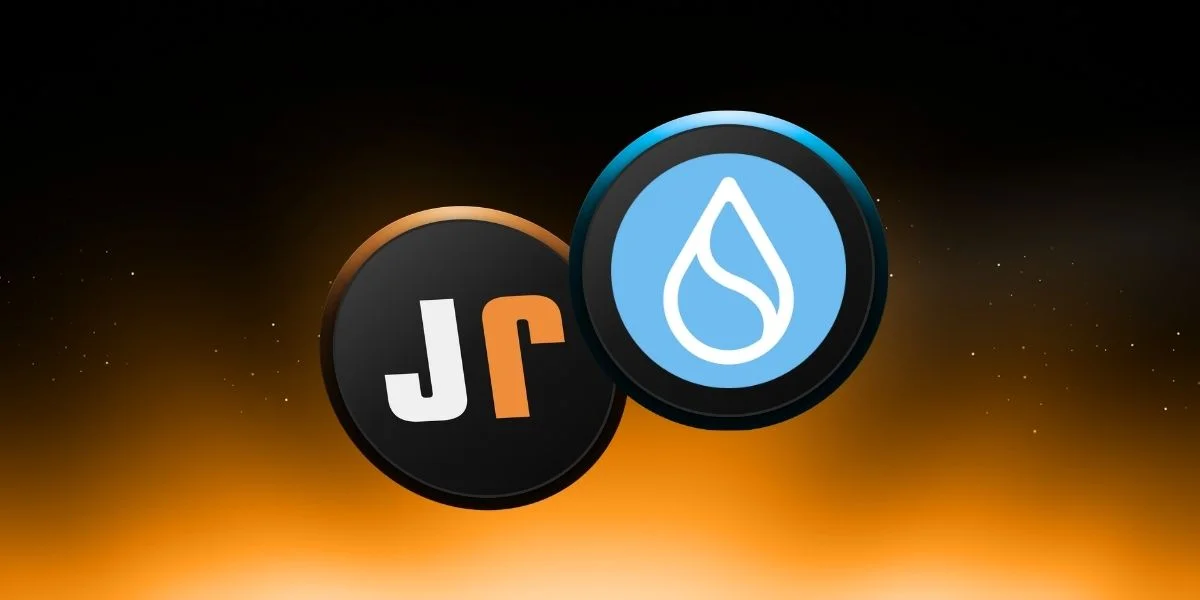
ETC Comment and Price Analysis - August 27, 2025
ETC/USDT Technical AnalysisLooking at the current daily chart, we see that ETC is still in an uptrend.The price of the coin bounced from the support level at $19.68 and is currently trying to recover.ETC is currently trading around the level at $21.41 and may test the $22.53 resistance in the short term.If the price can break above the level $22.53, ETC can climb to the $25.79 – $27.07 zone, which stands as a strong selling area. If broken, the next target in the mid-term could be the level at $31.42.$19.68 is still the key support below.If this key support breaks, we should be following the next support levels at $18.75 and $16.65.The lower trend line is at $15.79, which is the main defense level. Shrinking Structure SummaryETC keeps its uptrend and is trying to hold above $19.68.Short-term resistance is $22.53.$25.79 – $27.07 is the strong selling zone.Supports are $19.68, $18.75, and $16.65.These analyses, not offering any kind of investment advice, focus on support and resistance levels considered to offer trading opportunities in the short and medium term according to the market conditions. However, traders are responsible for their own actions and risk management. Moreover, it is highly recommended to use stop loss (SL) during trades.
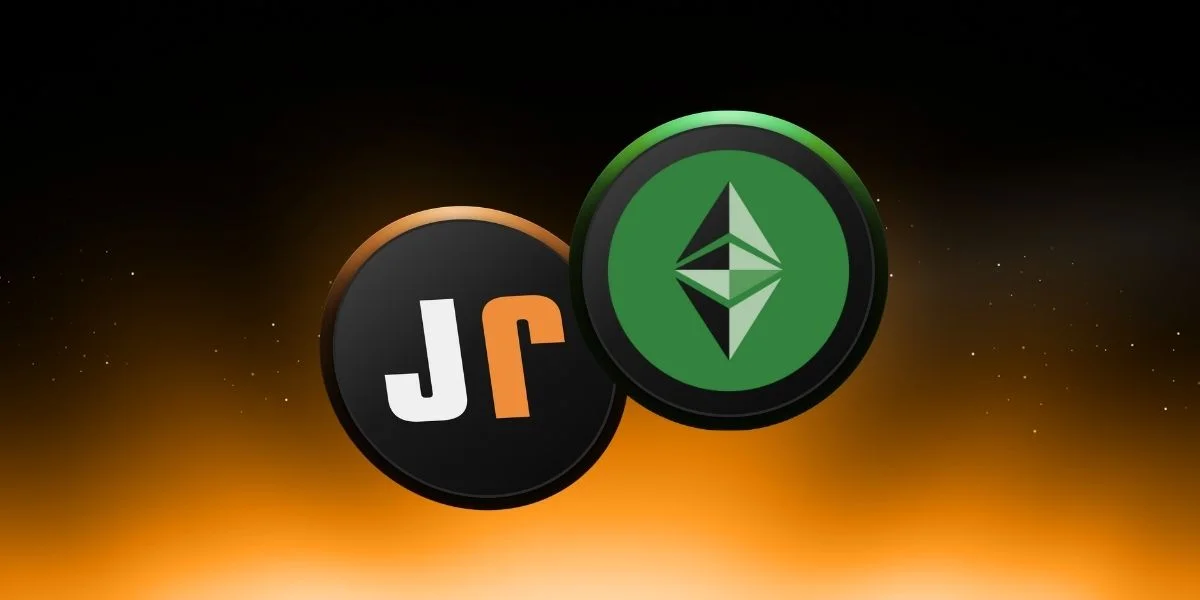
Is a Chainlink ETF on the Way? Bitwise Submits Official Filing with the SEC
US-based asset management company Bitwise Asset Management has taken a notable new step in the cryptocurrency market. The company announced plans to launch a spot ETF for Chainlink (LINK) in its S-1 filing with the United States Securities and Exchange Commission (SEC). This development is a critical milestone, particularly given the recent approval of Bitcoin and Ethereum ETFs, which have led to the emergence of altcoin-focused exchange-traded funds.ETF Structure and DetailsAccording to the filing, the Bitwise Chainlink ETF will track the spot price of LINK, and the assets will be held directly through Coinbase Custody Trust Company. Coinbase, Inc. will serve as the primary intermediary in executing the transactions. The ETF's shares will be traded on a national exchange in the US, but the listing platform has not yet been announced.The fund will offer both cash and a crypto-based creation and redemption mechanism through a process called "Trust-Directed Trade." This aims to provide investors with greater flexibility in portfolio management. Another noteworthy point is that, despite the SEC's statements last May, the filing contains no plans for staking. As you may recall, the SEC stated that staking in proof-of-stake networks is not considered a security transaction. However, Bitwise's ETF structure focuses solely on reflecting the price of LINK; this means investors will not receive returns such as staking rewards or validator participation.Chainlink's Role in the Crypto EcosystemLaunched in 2019, Chainlink operates as a decentralized oracle network connecting blockchains with real-world data. This system, which allows smart contracts to receive reliable data from the outside world, such as prices, weather, and election results, has a wide range of applications, from DeFi and NFTs to gaming and enterprise blockchain solutions.The LINK token is used to incentivize validators on the network, ensure data reliability, and support governance processes. Today, Chainlink has become a major infrastructure player not only in the crypto but also in the traditional financial world, collaborating with major institutions such as Swift, UBS, and the Brazilian Central Bank.Market Impact and Institutional InterestBitwise's Chainlink ETF application will be one of the first ETFs based on oracle networks in the US market. While companies like 21Shares and VanEck already have LINK-focused ETP products in Europe, this move is largely a first in the US.Globally, crypto ETFs have attracted nearly $30 billion in investment by 2025. In this context, the listing of an infrastructure-focused project like Chainlink in the US could open the door to significant institutional capital flowing to LINK. Analysts believe that the approval of such a product would have a significant impact not only on the price but also on LINK's legitimacy and influence within the ecosystem.Latest on LINK PriceAs of this writing, Chainlink (LINK) is trading at $23.51. LINK, which has traded between $22.94 and $24.70 over the past 24 hours, is the 13th-largest crypto asset, according to market data. While the price is down approximately 55% from its May 2021 peak of over $52, it has returned to the spotlight amid growing institutional interest.
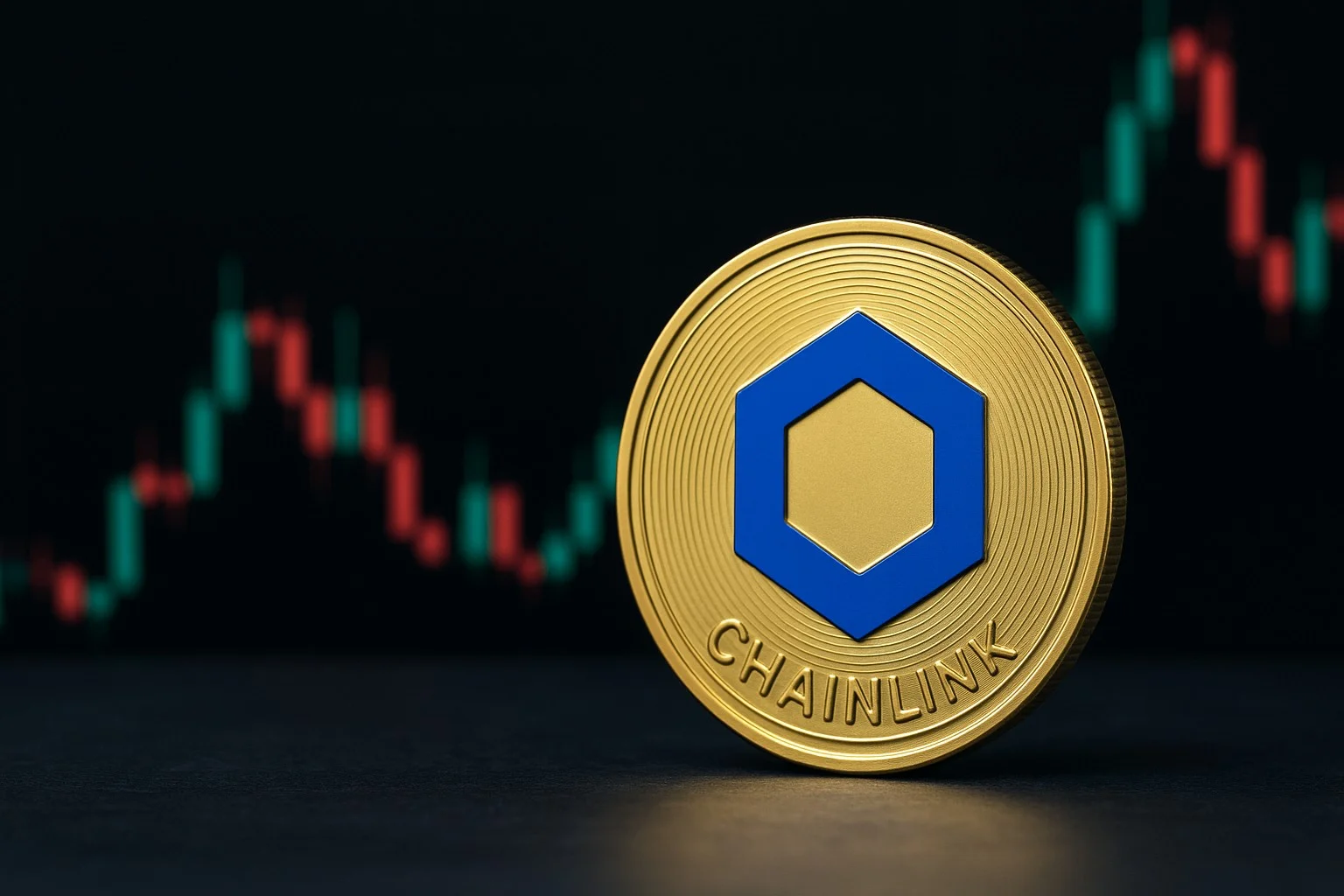
Corporate Doping for Solana: $1.75 Billion Investment Coming
As cryptocurrency markets continue to fluctuate, major funds and public companies are taking aggressive steps to add digital assets to their balance sheets. Solana (SOL), Binance Coin (BNB), and Ethereum (ETH) are particularly at the center of these new treasury strategies. Recent news suggests that the multi-billion dollar investments led by Pantera Capital could create the largest institutional treasury in history within the Solana ecosystem.Pantera's $1.25 Billion Solana TreasuryAccording to The Information, Pantera Capital plans to raise up to $1.25 billion to transform a US-listed company into a treasury vehicle called "Solana Co." The initial phase of this initiative will involve raising $500 million in equity, followed by the issuance of $750 million in warrants, bringing the total amount raised to $1.25 billion.If successfully implemented, Pantera's investment in Solana will be the largest institutional investment in Solana to date. Currently, publicly traded companies hold approximately 3.44 million SOL (approximately $650 million) on their balance sheets. Pantera's target size alone would double this amount.Rival giants raise $1 billion in alternative SOL treasuryWhile Pantera's plans were being announced, it was revealed just one day earlier that Galaxy Digital, Jump Crypto, and Multicoin Capital were also trying to raise $1 billion for a similar initiative. This plan, led by Cantor Fitzgerald, also received the support of the Solana Foundation. With these two separate initiatives, it appears that major funds are looking to create a similar model for Solana, similar to MicroStrategy's (MSTR) Bitcoin accumulation strategy.In addition to Solana-focused moves, BNB and Ethereum are also the focus of institutional investments. China-based China Renaissance Holdings announced that it will allocate $100 million to BNB as part of its strategic partnership with YZi Labs. This plan includes, in addition to token investments: It also involves developing products based on the tokenization of real assets, compliant with Hong Kong regulations.In the US, B Strategy is planning a $1 billion capital raise for a BNB treasury to be listed on Nasdaq. The presence of Metalpha and Bitmain backgrounds on the management team lends credibility to the project. On the Ethereum side, ETHZilla, listed on Nasdaq, announced a $250 million share buyback program. The company currently holds 102,237 ETH. ETHZilla plans to invest its assets through on-chain yield protocols.While market volatility has continued in recent months, the billion-dollar inflows into crypto assets by large institutions are noteworthy. According to market data, publicly traded companies currently hold more than 3.7 million SOL, representing approximately 0.7% of Solana's total supply. The SOL price is currently around $188.
